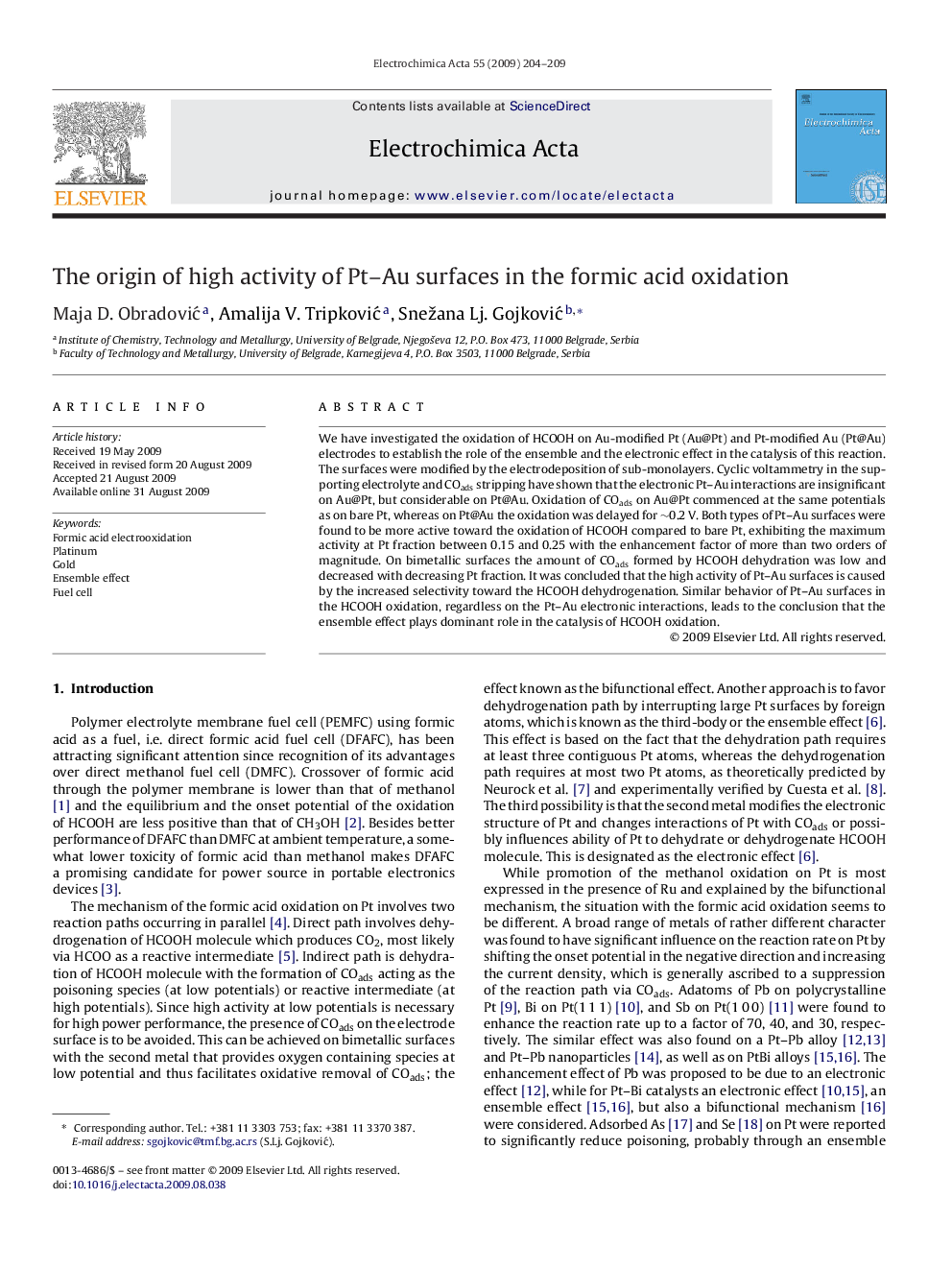| Article ID | Journal | Published Year | Pages | File Type |
|---|---|---|---|---|
| 191493 | Electrochimica Acta | 2009 | 6 Pages |
We have investigated the oxidation of HCOOH on Au-modified Pt (Au@Pt) and Pt-modified Au (Pt@Au) electrodes to establish the role of the ensemble and the electronic effect in the catalysis of this reaction. The surfaces were modified by the electrodeposition of sub-monolayers. Cyclic voltammetry in the supporting electrolyte and COads stripping have shown that the electronic Pt–Au interactions are insignificant on Au@Pt, but considerable on Pt@Au. Oxidation of COads on Au@Pt commenced at the same potentials as on bare Pt, whereas on Pt@Au the oxidation was delayed for ∼0.2 V. Both types of Pt–Au surfaces were found to be more active toward the oxidation of HCOOH compared to bare Pt, exhibiting the maximum activity at Pt fraction between 0.15 and 0.25 with the enhancement factor of more than two orders of magnitude. On bimetallic surfaces the amount of COads formed by HCOOH dehydration was low and decreased with decreasing Pt fraction. It was concluded that the high activity of Pt–Au surfaces is caused by the increased selectivity toward the HCOOH dehydrogenation. Similar behavior of Pt–Au surfaces in the HCOOH oxidation, regardless on the Pt–Au electronic interactions, leads to the conclusion that the ensemble effect plays dominant role in the catalysis of HCOOH oxidation.
